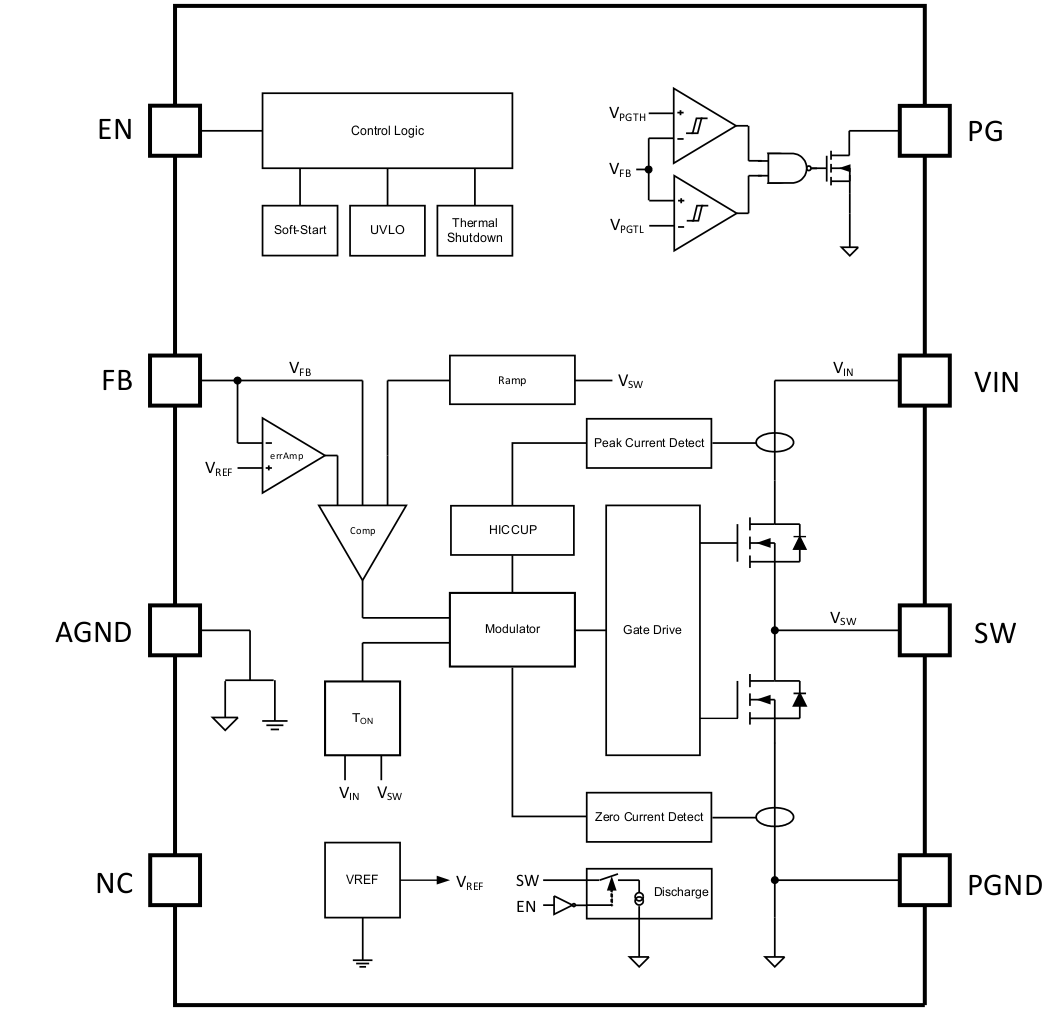TIDUEZ4 May 2021
- Description
- Resources
- Features
- Applications
- 5
- 1System Description
-
2System Overview
- 2.1 Block Diagram
- 2.2 Highlighted Products
- 2.3 Design Considerations
- 3Hardware, Software, Testing Requirements, and Test Results
- 4Design and Documentation Support
- 5About the Author
2.2.2.3 TPS62825
The TPS62825 and TPS62821 are synchronous step-down converters based on the DCS-Control™ (Direct Control with Seamless Transition into Power-Save Mode) topology with an adaptive constant on-time control and a stabilized switching frequency. It operates in PWM (pulse width modulation) mode for medium to heavy loads and in PSM (power save mode) at light load conditions, keeping the output voltage ripple small. The nominal switching frequency is about 2.2 MHz with a small and controlled variation over the input voltage range. As the load current decreases, the converter enters PSM, reducing the switching frequency to keep efficiency high over the entire load current range. Since combining both PWM and PSM within a single building block, the transition between modes is seamless and without effect on the output voltage.
The TPS62825 offers excellent DC voltage and fast load transient regulation with low output voltage ripple that is ideal for powering the video processor.
 Figure 2-8 TPS62825 Functional Block
Diagram
Figure 2-8 TPS62825 Functional Block
Diagram